Scientific Name: Archontophoenix cunninghamiana
-
Pronunciation:ar-kon-toe-FEE-nix cun-ing-HAME-ee-ah
-
Common Name:Picabeen, Bangalow Palm
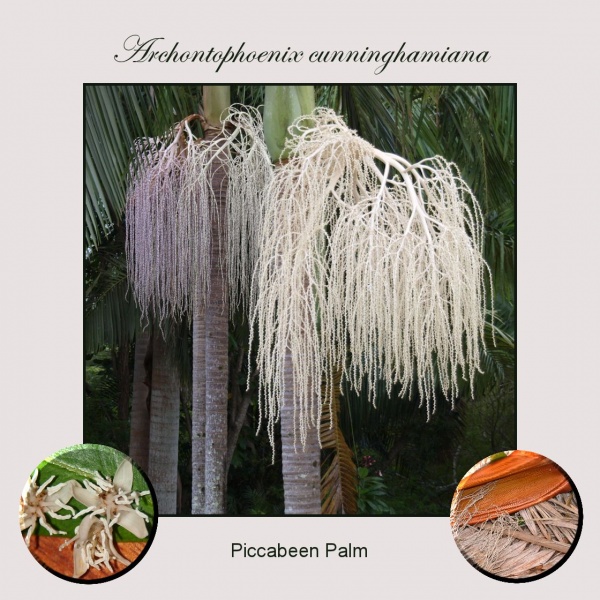
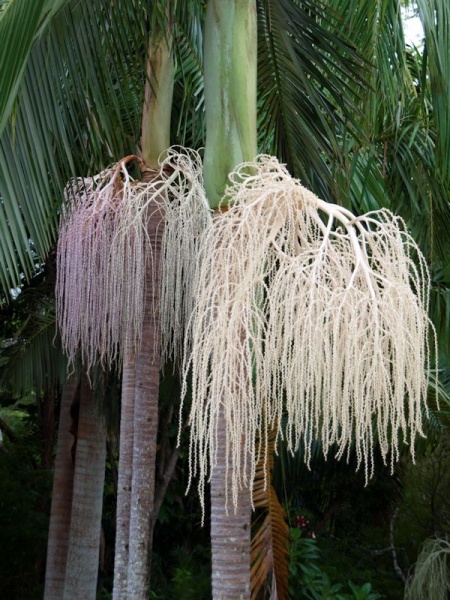
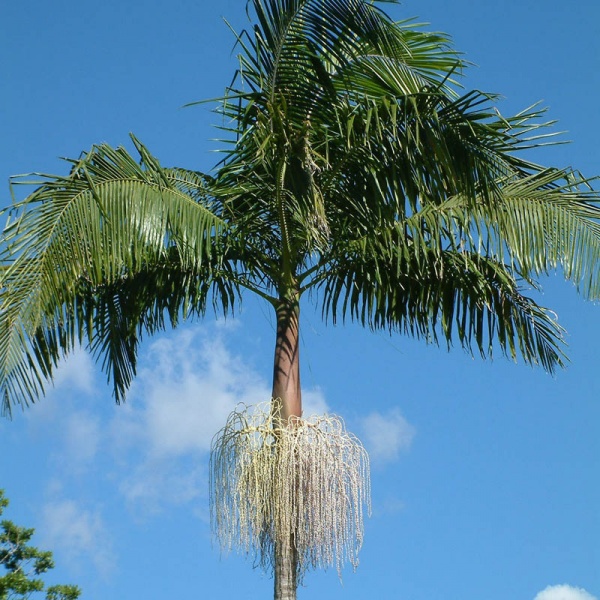

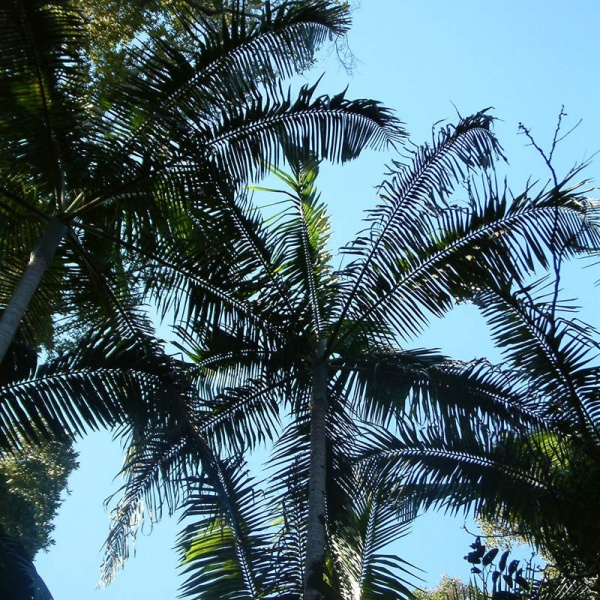
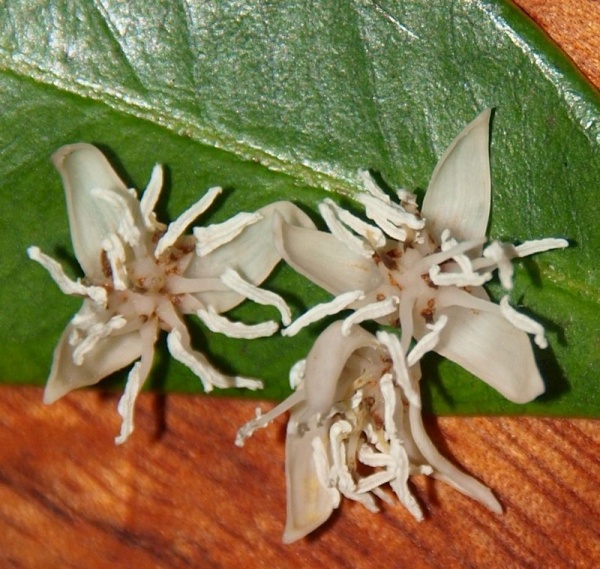
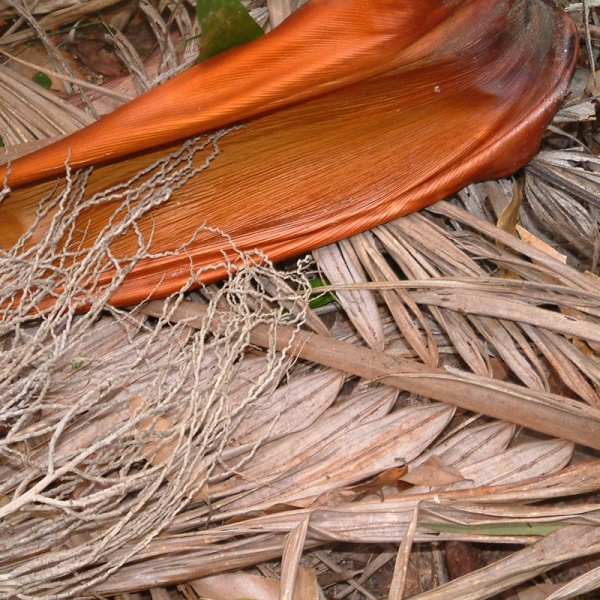
-
Derivation:Archontophoenix: G. archontos - a chieftan, phoenix - date palm cunninghamiana: honours Alan Cunningham, Australian explorer and plant collector
-
Type:
-
Family:ARACACEAE
-
Flowers:Light blue to Pinkish mauve, monoecious, August to December
-
Fruit:Drupe, red, round, 10-15 mm dia
-
Vegetation Type:Sub-tropical, littoral and lowland Rainforest and along moist scrubby creek banks.
-
Species List:Leslie Drive Roundabout, Weyba Esp, Plants for Coastal Gardens, Landcare Display Garden, Kennilworth Fig Tree Walk, Bush food, Craft, FI Podberscek, Biosphere Day Noosa Woods, Heritage Park, Wooroi Day Use Area Tracks, Kingfisher Bay Resort, Wooroi Palm Grove, BSDoonan, Cooloothin Corner, Banana, Old Tewantin, Tewantin Forest Gyndier, Fraser Island, Stratford Park, Janet, NNS, Upper Yandina Creek, NNP Tanglewood, NNP Palm Grove, Kin Kin Scrub, Dandaloo, BHNR, Wallace Park, Regional Ecosystem 12.2.1. Regional Ecosystem 12.11.1. RE 12.12.1. RE 12.12.2a.
Cultural Notes
TAKE CARE! Some information about bush foods and medicines may be anecdotal. Correct identification and preparation is essential:
Pikki (container) made from old leaf sheath. | Curved leaf base used to collect grubs.
Bush food: Growing bud of new leaves eaten raw or cooked like cabbage. Cutting growing bud kills tree.
Identification Notes
Tall palm|| Fronds: green under leaf||Plantnet Arborescent, the stems up to 20–25 m high 25 cm diam., enlarged at the base. Leaves pinnately divided, 3–4 m long, with 80–100 pairs of segments; segments linear, 60–90 cm long, 3–8 cm wide, entire, green on both surfaces; petiole 20–25 cm long, sheathing base 60–90 cm long. Inflorescence 1–1.5 m long; spikes 50–80 cm long; spathes 30–40 cm long. Flowers pink to lilac; stamens 9–18. Fruit globose, 13–15 mm diam., red.
Associated Fauna
Butterfly host plant: Orange palmdart, Yellow palmdart. Skipper butterfly host plant. ||Attractive to fruit-eating birds.||
Landscaping Notes
Noosa Council Preferred Species list . ||Successfully propagated by Noosa & District Landcare. ||Prefers shaded moist situation, fast-growing. Best grown in clumps. ||Indoor pot plant potential. ||Feature foliage||Successfully propagated by Coolum Community Native Nursery.||Successfully propagated by Tin Can Bay City Farm Nursery.|||Successfully propagated by Florabunda Bushcare nursery, Woombye|Successfully propagated by Mooloolah Native Nursery||Featured in Noosa Landcare Display Garden at Pomona.||Successfully propagated by Barung Landcare||


